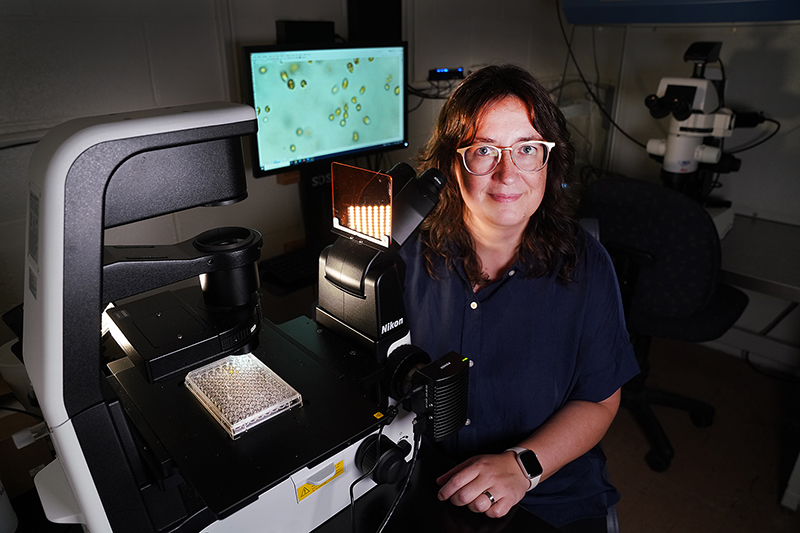
Jennifer Wisecaver, associate professor of biochemistry at Purdue University, looks for genetic variation in single-celled algae associated with algal blooms. Appearing on the monitor are specimens of Prymnesium parvum, which cause ecologically harmful algal blooms worldwide, including across much of the United States. (Purdue University photo/Tom Campbell)
Findings could help better predict toxic algal blooms
WEST LAFAYETTE, Ind. – A microscopic species of algae is causing toxic algal blooms around the world, affecting two dozen states in the U.S., especially Texas. New research into the genetic diversity of the responsible organism, Prymnesium parvum, could help authorities predict when blooms will occur.
Prymnesium blooms every winter in Texas, leading the Texas Parks and Wildlife Department to monitor several lakes for signs of the next one. "When they bloom, they do more than kill fish. They disrupt whole ecosystems," said Jennifer Wisecaver, associate professor of biochemistry at Purdue University.
Prymnesium, like many other single-celled organisms, along with all animals, plants and fungi, are eukaryotic organisms. Their cells all contain a nucleus. But Prymnesium are also classified as protists, meaning they are neither animal, plant nor fungi. And like plants, Prymnesium has chloroplasts to harness energy from the sun, which makes them algae.






